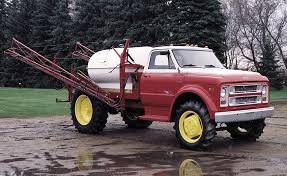I've seen a lot of complaints on various off road and Land Cruiser forums about the torsion bar set up in the front of the 100 series. I'd be curious to hear from 100 series owners if any of these criticisms are justified?
I don't really have a problem with torsion bars myself - they're simple, durable, and easy to maintain.
I realize they may not be ideal for monster lifts and eye-popping flex, but I'm pretty sure Land Cruiser wagons were never really designed for technical rock-crawling in the North American sense. Sure, the older models had solid front axles, but they had leafs or radius arms in the case of the 80 - designed more for long term durability than for a weekend romp through the Rubicon; otherwise they would've linked it like a Jeep.
I could be wrong here, but do you see people driving their Land Cruisers over r boulders just for the sake of it in Angola or Cambodia? Recreational off-roaders seem like a tiny slice of the market compared to those who drive them for decades along rough unimproved roads that might elicit scoffs fro the typical off-road enthusiast in the US, but still demand a sturdy construction from a vehicle that expects to ply them for an extended period of time.
All in all, it could be argued that the 100 series represents the best ever iteration of the Land Cruiser for the kind of use described above. It may have its downsides - cracking exhaust manifolds and less-than-ideal starter location on the 4.7 and relatively weak front diffs for the size of the vehicle - but it's arguably the most reliable version of the model Toyota has ever produced. It doesn't seem to have as many instances of fluid leaks and gasket failures as previous generations, though some argue it lost that sense of fun and character that made previous generations so endearing.
Sorry for the long-winded post. I'd appreciate any insight.
I don't really have a problem with torsion bars myself - they're simple, durable, and easy to maintain.
I realize they may not be ideal for monster lifts and eye-popping flex, but I'm pretty sure Land Cruiser wagons were never really designed for technical rock-crawling in the North American sense. Sure, the older models had solid front axles, but they had leafs or radius arms in the case of the 80 - designed more for long term durability than for a weekend romp through the Rubicon; otherwise they would've linked it like a Jeep.
I could be wrong here, but do you see people driving their Land Cruisers over r boulders just for the sake of it in Angola or Cambodia? Recreational off-roaders seem like a tiny slice of the market compared to those who drive them for decades along rough unimproved roads that might elicit scoffs fro the typical off-road enthusiast in the US, but still demand a sturdy construction from a vehicle that expects to ply them for an extended period of time.
All in all, it could be argued that the 100 series represents the best ever iteration of the Land Cruiser for the kind of use described above. It may have its downsides - cracking exhaust manifolds and less-than-ideal starter location on the 4.7 and relatively weak front diffs for the size of the vehicle - but it's arguably the most reliable version of the model Toyota has ever produced. It doesn't seem to have as many instances of fluid leaks and gasket failures as previous generations, though some argue it lost that sense of fun and character that made previous generations so endearing.
Sorry for the long-winded post. I'd appreciate any insight.







